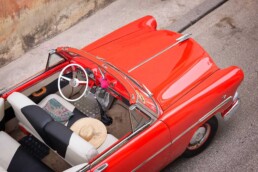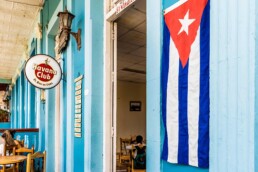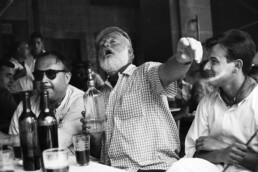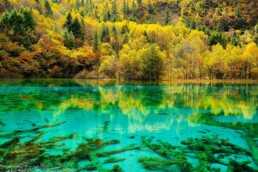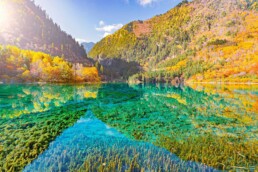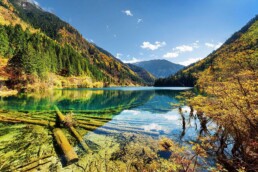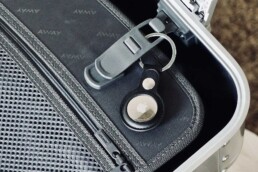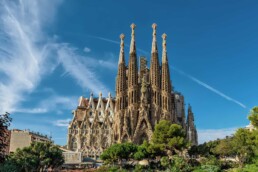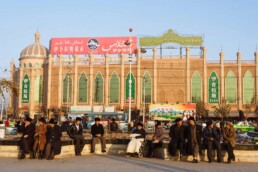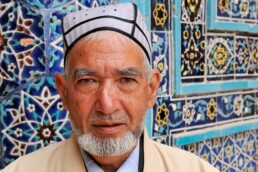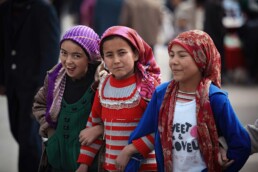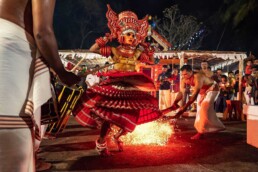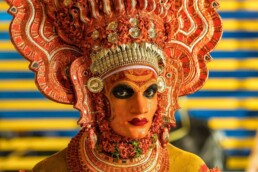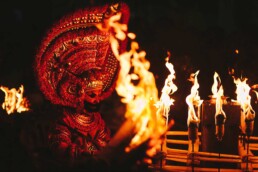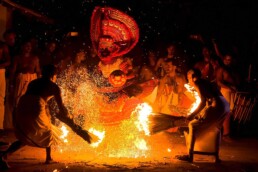Climate-Proof Your Style with the Right Jacket
As the biting bite of December’s chill settles across much of the Northern Hemisphere, travellers are reminded of the value of careful planning. The jacket, an essential companion for travellers, becomes more than just a clothing; it’s a protective layer against the weather and a symbol of adaptability. With temperatures ranging from icy polar winds to temperate rainforests, choosing the correct jacket necessitates both strategy and an awareness of what distinguishes each region.
Embracing Frost: Jackets for Winter Wonderland Adventures
Imagine entering a snow-covered environment with temperatures dropping to sub-zero levels. In these circumstances, insulation is your best friend. Down coats, stuffed with goose or duck feathers, have excellent warmth-to-weight ratios and trap heat efficiently. Synthetic insulated jackets, on the other hand, are great for damp cold, as moisture can damage down’s insulating characteristics. Look for exterior shells with water-repellent coatings to defend against snow and sleet.
Layering is quite important in this context. Combine a mid-layer fleece or wool jumper with a waterproof and windproof outer shell to provide adaptable warmth. Winter coats with adjustable hoods and snow skirts provide extra protection, preventing sneaky drafts while exploring ice caves or ski slopes.
Battling Rain and Wind: The Need for Waterproof Shells
Staying dry becomes a problem in rainy areas such as Norway’s misty fjords or the Pacific Northwest’s verdant landscapes. Waterproof jackets, especially ones with GORE-TEX or comparable membranes, are invaluable. These high-tech textiles keep water out while allowing sweat to leave, eliminating the clammy feeling after a strenuous walk.
Lightweight rain shells with adjustable cuffs and hem cinches allow trekkers to move around freely. For urban travellers, trench-style raincoats with a modern appeal mix utility and fashion, keeping you dry while you meander through cobblestone streets in the drizzle.
How to Survive in the Tropics: Humidity and Sudden Storm Jackets
Tropical areas present their own set of issues, including unpredictable rain showers and excessive humidity. Choose breathable and lightweight coats with water resistance rather than full waterproofing, as ventilation is critical to avoiding overheating. Softshell jackets with moisture-wicking characteristics can protect you from sudden rain and mosquito bites on jungle trips.
Temperatures in high-altitude tropical places, such as the Andes, can decrease significantly after sunset. A packable insulated jacket is a sensible solution that combines compactness with warmth on chilly nights.
Navigating the Desert: Where Heat Meets Chill
Deserts are a study in extremes, with blistering heat during the day and bone-chilling cold at night. A adaptable jacket is required to handle these quick variations. Lightweight and sun-resistant materials protect against UV exposure during the day, while a packable insulated jacket or fleece layer keeps you toasty after the sun goes down.
Wind is another aspect to consider in desert environments. Look for windproof jackets with high collars and elasticised cuffs to keep out sand and grit brought by sudden gusts. Neutral colours, such as beige or khaki, reflect sunshine and keep you cool during the day.
Mastering the Mountains: Equipment for High-Altitude Explorations
Mountain weather is typically erratic, with brightness swiftly giving place to thunderstorms. Layering is an absolute necessity in such contexts. Begin with a moisture-wicking base layer to regulate sweat, then add an insulating midlayer like fleece or synthetic down. The outermost layer is a durable hardshell jacket designed to endure high winds and precipitation.
Look for jackets with alpine-specific features, such as pit zips for ventilation during steep ascents, helmet-compatible hoods for climbers, and reinforced panels for toughness against rock scrapes. Bright colours are a sensible choice for improving visibility in an emergency.
Adapting to Transitional Seasons: Jackets for Mild Climates
Spring and fall necessitate adaptability, as temperatures can fluctuate considerably during the day. A three-in-one jacket, which includes a detachable warm layer and a waterproof outer shell, is an excellent travel companion. This modular design enables you to adapt fast, whether you’re basking in morning sunshine or fighting an unexpected afternoon downpour.
A beautiful peacoat or wool blazer is ideal for nighttime outings in cities during transitional seasons, providing a blend of warmth and sophistication while remaining practical.
Fine-tuning the Fit: A Traveler’s Checklist
Choosing the proper jacket is about more than simply the weather; it’s also about comfort and utility. Ensure that the fit allows for layering, particularly in colder climates. Adjustable features such as cuffs, hems, and hoods provide both customisation and protection. Pockets are a traveler’s secret weapon; look for designs with many pockets to store items such as gloves, maps, and snacks.
Choice of fabric is also important. Natural fibres, such as wool, excel at keeping warmth, whilst synthetic materials have excellent water resistance and quick drying capabilities. For extended trips, prioritise jackets that are packable, allowing you to reduce space in your luggage while being prepared.
The Journey’s True Companion
Every climate has unique requirements, and each jacket tells a story. Whether you’re fighting Arctic storms, wandering through tropical rainforests, or navigating crowded cities, the apparel you wear can make or break your experience. The best jackets are those that perfectly merge utility and the spirit of exploration, evoking the modern traveler’s tenacity and versatility.
The cold weather in December calls for adventure. Allow your jacket to be more than just a need as you go on your journey—it will reflect your wanderlust, serve as a symbol of readiness, and be your ally in embracing the world’s ever-changing environment.
Lost in Cuba: Vintage Cars, Rhythms, and Revolution
Cuba, the Caribbean’s largest island, is a mystery that combines beauty and intrigue. It’s a location where time appears to stand still one minute, with old automobiles rumbling past pastel-colored colonial buildings, and then quickly leaps forward as the island tiptoes towards modernity. This land, rich in history, culture, and hardy people, offers visitors more than just beautiful beaches; it encourages them to step into its distinct, storied past.
Early Origins: To the Heart of the Caribbean.
Long before modern-day travellers went to Cuba’s crystal-clear beaches and listened to the beautiful sounds of salsa in Havana’s bustling streets, the island was home to indigenous people, primarily the Taínos. For generations, these indigenous communities thrived on the island of Cuba, cultivating the land, practicing spirituality through complicated ceremonies, and maintaining a balanced way of life that was closely connected to nature.
Their world, however, was irreparably transformed in 1492, when Christopher Columbus, flying the Spanish flag, arrived on the island during his first voyage to the New World. Christopher Columbus reportedly characterised Cuba as “the most beautiful land that human eyes have ever seen.” That encounter laid the groundwork for Spain’s colonisation, which would permanently alter the course of the island and its people. Over time, the Spanish imported African slaves to labour on sugarcane plantations, resulting in a rich yet complex cultural fusion that can still be felt today in Cuba’s music, art, religion, and cuisine.
Havana, Where History Meets Modern Adventure
Fast forward several centuries, and Havana, Cuba’s capital city, is an absolute treasure trove for history aficionados, art lovers, and those looking for something special. Stepping into the city is like entering a time capsule, providing a unique view of Cuba’s momentous years.
Old Havana (“La Habana Vieja”), a UNESCO World Heritage site, is undoubtedly the most famous portion of the city, and it’s easy to get lost among its cobblestone alleyways, beautiful forts, and bustling plazas. Meandering through its narrow alleyways, you’ll come across old Spanish cathedrals, faded colonial homes, and, of course, the famed vintage American cars—Chevys, Buicks, and Oldsmobiles from the 1950s.
However, it is not only the building that captivates the emotions. Wandering through Havana is like returning to a golden age of music and dance. Almost every street is alive with the rhythm of “son cubano,” the pulses of salsa, and the unmistakable sound of Cuban jazz emanating from colourful bars and cafes. For a genuinely authentic experience, visit La Bodeguita del Medio or Floridita, novelist Ernest Hemingway’s old haunts, and order a mojito or a daiquiri while immersing yourself in the ambiance of bygone eras.
But Havana is also a live, breathing, and changing city. New creative vitality is pulsing beneath its old charm. You’ll come across trendy art galleries, fashionable rooftop bars, and chic native restaurants that combine worldwide flavours with Cuba’s culinary traditions. This modern, forward-thinking side of Havana is gradually transforming the city’s appearance while remaining true to its rich historical origins.
The Cuban Revolution: A Story of Resilience and Struggle
To truly appreciate Havana—or Cuba as a whole—you must go beyond the sights and sounds and delve into the island’s turbulent political history. No visit to Cuba is complete without appreciating the colossal significance of the Cuban Revolution. Political instability has affected the island’s history, particularly Fidel Castro’s ascent to power in 1959 with the fall of dictator Fulgencio Batista.
The revolution converted Cuba into a socialist state, altering its relations with the rest of the world, particularly the United States. The iconic Plaza de la Revolución is one of the most lasting emblems of this political shift. Monuments commemorating Revolutionary heroes such as José Martí, Che Guevara, and Camilo Cienfuegos tower over the expansive field, serving as compelling reminders of the values that defined the country’s present character.
While the Revolution brought about significant social improvements such as universal health care and education, Cuba also faced economic challenges, which were worsened by a decades-long US embargo. A walk through any Cuban neighbourhood reveals a complex reality: while the country has some of the top doctors and schools in the region, many people live in dilapidated structures and experience daily economic challenges. Despite its trials, one of Cuba’s greatest qualities is its people’s indomitable spirit—their tenacity, generosity, and ingenuity. Ask anyone what they find most striking about Cuba, and they will almost certainly say the same thing: the people.
Beyond Havana: Cuba’s Diverse and Stunning Landscapes
Cuba’s attractiveness is not limited to Havana’s renowned skyline. The island boasts stunning landscapes—diverse ecosystems that appeal to everyone, from beachgoers to hikers.
The Viñales Valley, located a few hours west of Havana, is a UNESCO World Heritage site with beautiful limestone hills known as mogotes that rise sharply from the earth. Viñales, known for tobacco farming, offers unique experiences such as horseback riding, panoramic views, and tours of old cigar manufacturers. You’ll encounter the rough beauty of Cuba’s countryside, which is far apart from the busy life of Havana.
Head east until you reach Trinidad, a superbly preserved colonial town that appears to have remained unchanged for the past 200 years. It’s a magnificent combination of brilliantly coloured houses, cobblestone streets, and Afro-Cuban traditions. The adjacent Valle de los Ingenios (Valley of the Sugar Mills) provides insight into Cuba’s sugar trade history, while the dazzling blue waters of Playa Ancón, just outside the city, appeal for leisurely afternoons on the beach.
For those seeking adventure and lush nature, visit Cuba’s Sierra Maestra highlands, which have gorgeous trails, waterfalls, and the famous camp of Fidel and Che during their revolutionary campaign. And for beach lovers, Cuba does not disappoint. Varadero Beach, on the north coast, has endless lengths of white sand, while Cayo Coco and Cayo Largo are some of the best beaches in the Caribbean.
Cuban Culture: More Than Cigars and Salsa.
Ask any traveler what comes to mind when they think about Cuba, and they will most likely say cigars, salsa, and rum. While these features are important to Cuban society, the island has much more to offer in terms of art and culture.
Cuban music is probably the country’s most famous cultural export. Salsa, son cubano, mambo, and cha-cha-cha evolved from the mix of African drum beats and Spanish songs, reflecting the island’s past. Visit each town square, and you’ll see someone playing a guitar, singing soulful ballads, or starting a spontaneous rumba in the streets.
Art is another important means of expression for Cubans. From the murals showing revolutionary slogans in Havana to the colourful galleries in Cienfuegos and Santiago de Cuba, artistic works in Cuba provide a window into the lives, frustrations, and hopes of its citizens. Renowned artists such as Wilfredo Lam have achieved international acclaim by combining Afro-Cuban religious themes with surrealism.
Of course, there’s the unmistakable link to religion. While Cuba is nominally a secular state, many Cubans practise Santeria, a distinct religion that combines African spiritual beliefs with Catholicism—a result of the country’s colonial and slave trade history. Travellers can learn about the practice by visiting local shrines, watching colourful processions, or even conversing with locals who follow the syncretic faith at rituals.
Cuba in Transition: The Road Ahead
Today, Cuba is a country in change. Since travel restrictions were lifted a few years ago, Cuba has welcomed more international tourists than ever before. While political reform has proceeded gradually, with the emergence of some private firms, Cuba continues to straddle two worlds, one steeped in the past and the other warily looking forward to the future.
Walking through Old Havana now, you can feel a palpable blend of historical romance and forward-thinking ambition. Cuba’s future remains uncertain, with reforms providing hope to many but also provoking arguments over the country’s direction.
This sense of movement, combined with Cuba’s history, music, architecture, and natural beauty, is what draws visitors to the country. It’s a country that inspires in-depth reflection and research, challenging you to go past the surface and find its complexities, contradictions, and charms. Cuba, from Havana’s bustling avenues to the tranquil, lush plains of Viñales, and from a well-aged cigar fashioned by hand to a frenetic salsa in the streets of Trinidad, remains a place both elegantly frozen in time and actively crafting its future.
So, if you want to go beyond sandy beaches and delve deeper into a country’s essence, Cuba is calling.
Daiquiris, Mojitos, and the Magic of Cuban Cocktails
When picturing a sunny, tropical afternoon, it’s difficult not to imagine oneself sitting by the beach, sand between your toes, a nice wind ruffling your hair, and a cold, delicious cocktail in your hand. For many of us, that cocktail could simply be a Daiquiri or a Mojito—two classic beverages that have become synonymous with carefree summer days and steamy evenings. Aside from their popularity, both of these Cuban-born beverages have a rich history and unique characteristics that make them eternally intriguing. So what is their story? And how did these classic cocktails spread from their Cuban origins to global fame? Let’s take a taste of history and delve into the legacy of the Daiquiri and Mojito.
The Daiquiri may appear to be a simple combination of rum, lime juice and sugar, but its origins are far more intricate than a basic formula on a bar menu. The cocktail’s name is derived from a little village called Daiquiri near Santiago, Cuba. And, like many great creations, the Daiquiri arose out of need. In the early 1900s, Jennings Cox, an American engineer, found himself hosting a gathering of his colleagues. According to the narrative, he ran out of gin, which was already the most popular liquor at the time, and had to make do with what was available locally: rum, lime, and sugar. The end result was a drink that was so vivid and vibrant that it became an instant success. Who could have predicted that a coincidental shortage would result in the birth of one of the world’s most popular cocktails?
From then, the Daiquiri made its way to the United States, where it found a particularly enthusiastic supporter in writer and bon vivant Ernest Hemingway. Hemingway, a frequent at Havana’s El Floridita bar, helped popularise a variation of the Daiquiri that bears his name: the Hemingway Special, a tart, less-sugary Daiquiri tailored to Hemingway’s diabetic dietary demands, though many just refer to it as ‘Papa’s Daiquiri’. Hemingway’s love for the drink only cemented its place in the pantheon of popular cocktails.
While the Daiquiri originated in the early twentieth century, the Mojito dates back far further, to the 16th century. According to legend, Sir Francis Drake and his men invented the Mojito when anchored near Havana and suffering from dysentery and scurvy. Locals gave a medicine comprised of sugarcane alcohol, mint leaves, lime, and cane sugar, which not only relieved the sailors’ problems but also served as the foundation for something pretty delectable. Though it’s difficult to envision pirates sipping sophisticated cocktails, this therapeutic rum treatment evolved into what we now know as the Mojito.
The Mojito, like any other drink, was not created out of need; rather, its contemporary form owes much to Cuban culture, where the cocktail was developed over centuries in Havana bars. The Mojito, like the Daiquiri, captivated notable enthusiasts, including, surprise, Ernest Hemingway. Hemingway, a cocktail connoisseur, purportedly named La Bodeguita del Medio, a small Cuban pub, as the location where he savoured “the best Mojitos.” Though he preferred the Daiquiri in general, these green, minty drinks were always within his reach.
Despite their shared roots in Cuba and rum, the main difference between a Daiquiri and a Mojito is in their supporting ingredients. Whereas the Daiquiri is light and refined, with only lime juice and sugar to create a perfectly tangy balance, the Mojito has a stronger flavour profile because to the inclusion of fresh mint leaves and sparkling water.
The Mojito’s trademark herbaceousness originates from muddled mint, which gives the beverage a refreshing and cooling effect. The drink is refreshing, herbaceous, and slightly effervescent, making it ideal for hot weather drinking. The Daiquiri, on the other hand, is tangier and more direct, with its simplicity serving as the ideal showcase for high-quality rum. If the Mojito is like rushing through a garden after a summer rainfall, the Daiquiri is like basking in the sun, a drink as elegant and timeless as a white linen suit.
As with other excellent drinks, the Daiquiri and Mojito have evolved and inspired creative people to put their own take on them. Variations on the Daiquiri have ranged from the frozen strawberry version popular at beach bars to more sophisticated versions including other types of citrus, rum strains, or even the use of bitters. The Hemingway Special featured a splash of grapefruit juice and maraschino liqueur, making it suited to those who want a sharper, more complex tone.
Meanwhile, the Mojito’s versatility has resulted in seasonal and fruit versions. Strawberry mojitos, raspberry mojitos and even pineapple mojitos—it appears that each barman has their own fruity spin to lend dimension to this frothy classic. Some substitute basil or cilantro for mint, giving the cocktail a distinct herbal flavour, while others replace rum entirely with spirits such as tequila or gin for an even more refreshing twist. Sparkling variants may skip the soda water and instead include Prosecco or cava for an extra celebratory zing.
While both drinks originated as native Cuban delicacies, they have spread far beyond tropical islands and Latin American shores to become popular beverages around the world. Today, you may find a Mojito or Daiquiri on a rooftop bar in New York City or a Parisian café, just as you would on the streets of Havana. its simplicity, as well as versatility, have contributed to its everlasting appeal.
Both cocktails gained to international prominence in part due to the long-lasting influence of Cuban culture and tourism, as well as their relationship with twentieth-century luminaries such as Hemingway. Following Prohibition, American cocktails were rife with rich spirits like whisky and brandy, and Cuba’s light, citrus-laden mixes provided a pleasant contrast. Travellers, particularly in recent decades, have regularly transported Cuban cocktail culture back to their respective cities, establishing Daiquiris and Mojitos as must-try drinks around the world.
Now that we’ve thoroughly examined both drinks, if you’re still deciding between the Daiquiri and the Mojito, here’s some food—or should we say “drink”—for contemplation. The Daiquiri is ideal for those who want tarter drinks with clean lines and pure rum flavour. It’s the cocktail version of a classic, minimalist wardrobe: ageless, sophisticated, and never out of fashion.
If you want freshness and enjoy the thought of sipping something aromatic and effervescent, the Mojito may be your drink of choice. It’s like walking into a herb garden with a cool drink in hand: refreshing, bright, and oh very summery.
Finally, the Daiquiri and Mojito are more than simply cocktails; they’re cultural ambassadors, serving up a bit of Cuba in every glass. Each taste of these cocktails tells a narrative about dangerous seas and pirates, overcoming shortages in inventive ways, and being swept away to a place of white sand beaches and rhythmic island music. Whether you’re drinking a Daiquiri poolside or raising a Mojito at sunset, you’re part of a long-standing tradition of entertainment, pleasure, and a not-so-subtle dose of history.
Autumn’s Ephemeral Symphony in Jiuzhaigou’s Mystical Heart
As the last remnants of summer disappear and the air becomes crisper, a transformation occurs in China’s Sichuan Province’s hills. Jiuzhaigou Valley, an isolated valley nestled in the Min Mountains on the Tibetan Plateau, transforms into a colourful artist’s palette. Autumn brings life to this UNESCO World Heritage site, where nature and culture merge to create a sight that is both timeless and fleeting.
Jiuzhaigou, or “Valley of Nine Villages,” is a location where stories come to life among mirrored lakes and primordial woodlands. The valley spans 720 square kilometres and features a scenery shaped by tectonic processes and the slow passage of time. In the autumn, the deep forests, which are home to conifers, maples, oaks, and birches, explode in flaming reds, golds, and ambers. The greenery dances with the sunshine, creating a kaleidoscope of reflections on the tranquil waters below.
Walking over the valley’s wooden boardwalks, travellers are met by the ethereal splendour of Five Flower Lake. Mineral deposits and rich aquatic plant life give this small, multi-colored lake its various colours. Fallen ancient trees are preserved beneath its crystal-clear surface, like drowned sculptures. Nearby, the Nuorilang Waterfall, one of China’s largest highland waterfalls, pours down travertine terraces, its veil-like waters wrapped in mist that catches the dawn sun.
The natural wonders of Jiuzhaigou are entrenched in legend. According to Tibetan folklore, the goddess Semo utilised a divine mirror made from wind and cloud by her lover, the deity Dage. A demon wanting their love drove Semo to drop the mirror, which broke into 118 sparkling lakes, resulting in Jiuzhaigou’s lovely waters. Each lake, they claim, contains a fragment of the goddess’ torn heart.
Historically, the valley has remained isolated, with its ecosystems unaffected by the terrain’s inaccessibility. The nine villages that give the valley its name are home to Tibetan and Qiang ethnic minority that have kept their traditions alive for millennia. Shuzheng, Heye, and Zechawa are among the villages that still reverberate with traditional music and the rhythms of daily pastoral life.
Autumn in Jiuzhaigou is more than just a visual feast; it’s an opportunity to explore the rich fabric of local culture. The communities provide a look into the peaceful relationship between humans and nature. Wooden houses embellished with colourful prayer flags and elaborate carvings serve as reminders of architectural traditions passed down through generations. Locals engage in long-standing traditions like as spinning prayer wheels, caring for yaks, and creating beautiful fabrics.
Festivals during this season bring people together to celebrate. The Reba Festival, for example, celebrates lively dances, swordplay, and storytelling, all of which are fundamental to Tibetan culture. Visitors are frequently invited to participate, uniting cultures through mutual joy and appreciation.
In August 2017, a 7.0-magnitude earthquake shook Jiuzhaigou, producing landslides and altering the landscape. Several scenic locations were damaged, including the Nuorilang Waterfall, which temporarily ceased to flow. However, the resilience of both the natural environment and local populations resulted in a determined effort to restore. The park reopened in September 2019, and nature began to recover, reminding us of the fragile balance between Earth’s forces and the responsibility required to preserve such beauties.
Jiuzhaigou is a hotspot for biodiversity, in addition to its breathtaking views. The valley’s many heights and microclimates provide habitats for a diverse range of flora and fauna. Despite its elusiveness, the endangered giant panda seeks safety in the dense bamboo woods on the valley slopes. Golden snub-nosed monkeys, with their characteristic blue features and golden coats, move through the canopies, while the Sichuan takin, a goat-antelope, navigates the rough terrain.
Birdsong follows hikers throughout the pathways, with snow pigeons and white-tailed nuthatch fluttering between branches. The ecological significance of the area emphasises the need for continued conservation efforts to ensure that Jiuzhaigou’s symphony of life continues to thrive.
Well-maintained pathways and shuttle buses that minimise environmental effect make it easier to explore the valley. The path usually starts at the park’s entrance and travels through the Shuzheng Valley, Rize Valley, and Zechawa Valley, each having its own set of lakes, waterfalls, and viewpoints.
One of the most breathtaking vistas is Arrow Bamboo Lake, called after the bamboo that surrounds it and was once home to pandas. The lake’s turquoise waters reflect the surrounding vegetation and sky, resulting in a mirror-like surface interrupted only by mild breezes.
Long Lake’s top reaches are 3,060 meters high. The largest and deepest in the valley, it is surrounded by snow-capped peaks and, according to folklore, has no bottom. The calm here is palpable, providing a peaceful contrast to the busier lower valleys.
Getting to Jiuzhaigou requires some forethought. The closest city, Chengdu, is about 450 kilometres away. Travellers can take a short flight to Jiuzhai Huanglong Airport, then drive over mountain passes. Alternatively, overland routes allow you to experience the gradual transition from metropolitan areas to pastoral countryside and majestic hills.
Accommodations vary from eco-friendly hotels to traditional guesthouses that provide a more immersive cultural experience. Given the popularity of the autumn season, it is recommended that you book in advance. Visitors are recommended to check the most recent travel advisories and park restrictions, as conservation initiatives may necessitate changes in access or permitted activities.
As the charm of Jiuzhaigou continues to fascinate worldwide audiences, sustainable tourism becomes increasingly important. Park management have taken steps to reduce human influence, such as limiting daily visitor numbers and increasing environmental education. Simple actions such as staying on approved trails, disposing of all rubbish, and respecting wildlife help to preserve the valley’s integrity.
Engaging with local communities through responsible tourism guarantees that economic gains go towards preservation efforts and cultural continuity. Buying handcrafted items, watching local performances, and hiring local guides all improve the visitor experience while encouraging mutual respect and understanding.
Jiuzhaigou’s autumn is transitory, a poignant reminder of nature’s cycles. The explosion of colour finally gives way to winter’s silence. However, this cycle contains the promise of regeneration. The falling leaves nurture the land, preparing for spring’s rebirth.
Witnessing Jiuzhaigou in autumn is like stepping into a universe where myth and reality merge, and the landscape echoes with stories both ancient and new. It’s an invitation to feel, not simply observe—a sensory experience that lasts long after you leave the valley.
As the sun sets behind the mountains and casts long shadows across the golden trees, Jiuzhaigou is enveloped in profound tranquilly. The peaks are illuminated by the day’s sunset light, casting a lovely glow across them. In this ephemeral moment, the valley represents the delicate balance of nature’s grandeur and the eternal spirit of its people—a symphony that, like the season, is both timeless and ever-changing.
The Tiny Secret Guardians of Your Gear
In an era where technology is constantly expanding the boundaries of human inventiveness, monitoring gadgets like Apple’s AirTag and Bluetooth-enabled trackers are silently revolutionising the way we protect our most important assets. From misplaced gear to stolen equipment, photographers’ lives have become increasingly dependent on these digital assistance. However, as with any technical innovation, these trackers have both advantages and disadvantages.
The concept of tracking objects isn’t new. People have been using padlocks and labels, as well as dog tags and engraving, to safeguard their belongings for millennia. However, the digital revolution fundamentally altered the scene. Modern tracking gadgets originated in military research. During World War II, radar technology was developed to track enemy planes, establishing the framework for future global positioning systems (GPS). The eventual availability of civilian GPS in the 1980s heralded a new era of location-aware services. Soon after, Bluetooth technology (invented in the 1990s) introduced short-range communication between devices, laying the groundwork for current trackers. In the twenty-first century, Apple and numerous other businesses combined the ease of Bluetooth and GPS to develop small, user-friendly devices such as AirTags, Tiles, and Samsung SmartTags.
As every photographer knows, equipment can be essential, with some kits costing as much as a small car. Keeping track of equipment, including cameras, lenses, flashes, and tripods, is critical. Tracking gadgets provide peace of mind by sending real-time updates on the location of your valuable equipment. Imagine being on a shoot in a strange city and realising you’ve forgotten your lens bag. With a device like an AirTag, a fast check on your phone can reveal its exact position, whether it was left in a taxi or in a café.
The simplicity of current trackers is one of their main draws. For example, Apple’s AirTag works flawlessly with the iPhone’s Find My network, utilising a wide network of other iPhone devices to discreetly locate lost objects. Photographers can effortlessly put an AirTag into a camera bag, a tripod case, or even a drone, allowing them to track everything from a distance without the need for additional hardware. Similarly, the Tile tracker is compatible with both Android and iOS, which broadens its user base and makes it a favourite among industry professionals.
Photographers are frequently on the move, whether shooting urban street scenes or trekking across isolated regions. Trackers offer flexibility due to their use of Bluetooth and GPS. If you’re shooting in a metropolis, Bluetooth signals can help you detect nearby goods within a short radius, whereas GPS can help you find stuff in larger areas. Some trackers even use crowd-sourced location services, in which other users’ devices help find lost items much beyond Bluetooth’s restricted range. This feature is extremely useful for photographers shooting in unfamiliar or high-traffic regions.
As useful as tracking devices are, they raise fundamental concerns about privacy and exploitation. Some persons have exploited these devices for unauthorised tracking, raising public concerns. In extreme circumstances, stalkers have placed trackers in victims’ automobiles or valuables. Photographers who travel with big amounts of equipment face the unnerving potential that their own belongings will be traced by hostile parties. Apple and other manufacturers have added capabilities to inform consumers if an unfamiliar device is identified while travelling with them, but these precautions are not infallible.
Although tracking systems rely primarily on Bluetooth and GPS technologies, they are not perfect. Bluetooth, for example, is only useful at short distances, often between 30 and 100 feet. Beyond this range, your smartphone is no more than a decorative keychain. GPS trackers, while providing greater coverage, can fail in remote or congested places such as deep forests, underground locations, or urban canyons. For photographers exploring difficult terrains or bustling cityscapes, these limits may result in brief interruptions in tracking ability—just when you need it most.
The battery life of modern tracking devices is limited by their tiny size. AirTags, for example, have a one-year battery life, although regular maintenance is still required. Other gadgets, such as Tile trackers, may require replacement or recharging more frequently. For photographers on multi-day shoots in isolated areas, a battery failure could render their tracker inoperable at the worst conceivable moment.
Tracking devices, which were originally designed to locate lost things, have found creative use among photographers. For example, wildlife photographers have been known to employ trackers on remote equipment near animals. After installing cameras in the woods, they may remotely track the position of their gear and retrieve it later.
Meanwhile, adventure photographers utilise trackers to help them navigate new terrains. A well-placed AirTag in a backpack or tripod bag can serve as a useful reference point on hikes, allowing photographers to retrace their travels and avoid becoming lost. In a field where mobility is critical, these devices can serve as vital survival aids.
The argument about tracking devices will most likely continue as technology advances. While privacy issues persist, manufacturers are constantly developing security mechanisms to avoid misuse. For photographers, the benefits frequently exceed the risks. These small, discrete tools offer peace of mind, enhanced security, and, when used creatively, can even improve a photographer’s productivity. However, like any instrument, they must be used with caution and an understanding of their limitations.
As we progress deeper into the digital age, the landscape of photography changes, and tracking devices are just one more tool in an ever-expanding arsenal. Whether you’re photographing the bustling of a metropolis, the calm of nature, or the immensity of the desert, knowing that your equipment is secure allows you to concentrate on what really matters—the art of photography.
Leave Only Footprints, Take Only Memories
World Tourism Day, observed annually on September 27, serves as a reminder of tourism’s tremendous impact on our global economy, cultures, and environment. It is a day set aside to recognise the role tourism plays in promoting mutual understanding, economic prosperity, and environmental preservation. However, as the twenty-first century progresses, the relationship between tourism and sustainability has grown in importance. Today, it is critical to consider how sustainable travel may impact the future of tourism, ensuring that the wonders of our globe are maintained for future generations.
Tourism as we know it now is a relatively new phenomenon, fuelled by the Industrial Revolution of the nineteenth century. During this time, technological breakthroughs like steamships and railroads made long-distance travel more accessible to the general public. However, the concept of tourism goes far further back—ancient Greeks and Romans travelled for pleasure, visiting monuments, spas, and temples, laying the groundwork for what would become a lucrative industry.
By the mid-twentieth century, tourism had grown into a global industry, with air travel transforming international exploration. The expansion of tourism offered enormous benefits: increased chances for cultural interaction, a thriving hospitality industry, and enhanced economic development, particularly in nations with natural or historical sites. However, with increased tourism came new issues, especially environmental deterioration, overtourism, and the exploitation of indigenous traditions.
This is where the discourse about sustainable tourism started. Over the last few decades, there has been a growing push to ensure that tourism not only benefits travellers but also protects and preserves the areas they visit. Sustainable tourism is defined as tourism that serves the requirements of both tourists and host communities while safeguarding and expanding future prospects. In other words, it seeks to reduce the negative effects of travel while increasing the advantages. This entails focussing on three major pillars: environmental sustainability, sociocultural preservation, and economic viability.
- Environmental Sustainability: This refers to methods that reduce the carbon impact of travel, protect wildlife, and preserve natural landscapes. Popular tourist attractions, including the Great Barrier Reef, Machu Picchu, and Venice, have all suffered environmental degradation as a result of overtourism, pollution, and unsustainable practices. Sustainable tourism promotes activities such as environmentally friendly transportation, waste reduction, and conservation efforts.
- Socio-Cultural Preservation: Tourism can have a positive and negative impact on local populations. While it provides much-needed economic opportunities, it may also result in cultural commodification and the destruction of local customs. Sustainable tourism emphasises the necessity of respecting local cultures, assisting indigenous communities, and fostering authentic, responsible tourists.
- Economic viability: Sustainable tourism seeks to divide the economic advantages of travel fairly among stakeholders. This involves ensuring that the local community, rather than just major enterprises, reaps the benefits of tourism through projects like community-based tourism, in which local citizens directly benefit from tourist activities.
Tourism and sustainability are more than a trend; they are a requirement. As the climate issue intensifies, the tourism sector must evolve. The United Nations has long recognised this, including sustainable tourism among its Sustainable Development Goals (SDGs). Goal 12.7 specifically asks for the promotion of sustainable tourism that generates jobs while also promoting local culture and products.
Several countries have responded to the challenge, making sustainability a key component of their tourism strategy. Bhutan, for example, has developed a “high-value, low-impact” tourism strategy that limits the number of tourists allowed in the nation and charges a daily fee to fund conservation efforts and community development. Similarly, Costa Rica has established itself as a leader in eco-tourism, with approximately 30% of its territory classified as protected land. In Europe, efforts such as the Green Key program recognise hotels and other tourism-related enterprises that fulfil high environmental standards, encouraging eco-friendly practices throughout the industry.
Consider a traveler embarking on a trip through Peru. Instead of joining the crowds that visit Machu Picchu every day, which contributes to the degradation of the historic monument, they take a less-known route: the Salkantay Trek. This alternate route provides breathtaking vistas of the Andes while reducing pressure on Machu Picchu’s delicate ecosystem. By staying at locally owned accommodations along the journey, the traveler ensures that their money goes directly to the indigenous Quechua communities that live in these mountains.
Such stories are more than simply individual choices; they represent a bigger tourist movement. Travellers can affect the future of tourism by making informed, responsible decisions. This narrative is gaining popularity as individuals become more aware of the environmental and cultural effects of their activities. Furthermore, sustainable travel experiences provide more fulfilling and enriching journeys. Engaging with local cultures, learning about a place’s history and traditions, and making a good influence can make travel more rewarding for both the visitor and the people involved.
Technology has emerged as a significant actor in the quest for sustainable tourism. From carbon offset programs integrated into ticket bookings to apps that assist travellers in reducing waste, technology provides novel solutions for decreasing the environmental effect of travel. Smart tourism—an emerging idea that uses data to optimise tourism experiences—allows cities to better manage tourist flows and avoid congestion in popular places.
For example, Barcelona uses sensors to monitor crowd levels at famous monuments such as La Sagrada Familia, changing suggestions and visitor patterns in real time to avoid overcrowding in certain places. This type of technology ensures that tourism does not have a negative impact on local quality of life while yet allowing visitors to enjoy their experience.
As we look ahead, sustainable tourism is expected to play a critical part in the rehabilitation of the travel sector following the epidemic. The epidemic served as a clear reminder of how overtourism has harmed many areas, and the sector now has a rare opportunity to rebuild in a sustainable manner. Governments, businesses, and travellers must all work together to guarantee that tourism not only returns, but grows stronger, more inclusive, and sustainable. This could include marketing lesser-known sites, investing in sustainable infrastructure, and instilling a culture of environmental and cultural stewardship.
On this World Tourism Day, we are reminded that tourism is more than just visiting new places; it is also about honouring and protecting the environment. Sustainable tourism is not simply an option; it is required if we are to continue enjoying our planet’s beauty and diversity without creating irreversible damage.
As travellers, we have the ability to make decisions that are consistent with these principles, such as supporting eco-friendly hotels, limiting trash, and engaging with local communities ethically. As we commemorate this day, let us pledge to make travel a force for good, ensuring that future generations can appreciate the beauties of our planet as we do now.
Happy World Tourism Day! Let us travel mindfully, investigate carefully, and guard passionately.
Rise At 10 ? Bending The Time in Xinjiang
Xinjiang, located in China’s far northwestern region, is a unique case study in timekeeping due to its geographical immensity and historical significance. Officially, the region uses China Standard Time (CST), which is UTC+8. Despite Xinjiang’s extensive longitudinal reach across multiple time zones, this time zone is consistent with Beijing’s. The reason for centralised timekeeping stems from the Chinese government’s efforts to establish administrative coherence and national unity. However, the implementation of CST in Xinjiang has resulted in a significant disparity between the official time and the region’s solar time, which has practical ramifications for daily life in this diverse territory.
Historically, the transition to CST in Xinjiang took place during a period of considerable national reform in the early twentieth century. Prior to this adjustment, Xinjiang used its own local time zones that were more closely linked with the region’s solar position. The transition to CST was part of a larger goal to incorporate Xinjiang into the national framework, reflecting the central government’s intention to streamline administrative operations and strengthen national unity. Despite this change, practical realities on the ground have forced many residents to continue using “local time,” which can diverge from official time by up to two hours. This disparity demonstrates the region’s distinct physical and cultural traits, which continue to affect local time traditions.
In everyday life, the gap between official and local solar time generates a unique dynamic in Xinjiang. Many organisations, including companies, schools, and government offices, operate on a schedule that corresponds to the region’s natural daylight rhythms rather than rigidly following to CST. As a result, daily activities in Xinjiang frequently begin and end later than what is expected according to official time. This change in local time patterns is a practical reaction to the region’s wide longitudinal range and changing daylight hours throughout the year. Travellers and expatriates visiting Xinjiang commonly need to adjust their plans to accommodate local time norms, highlighting the practical constraints and intricacies of time management in this unique context.
The time difference has an impact on many aspects of life in Xinjiang. Agriculture, a key component of the region’s economy, is one sector where the time difference has a practical impact. Farmers in Xinjiang frequently start their work sooner or later than the official hour to take use of natural daylight, increasing output and matching their activities with changing lighting conditions. Furthermore, media and television schedules in the region frequently take a hybrid approach, balancing CST with local time preferences to meet the different needs of the populace. This complex approach to timekeeping displays Xinjiang’s systems’ adaptability to meet both national and local requirements.
Furthermore, the time difference in Xinjiang is not just a technical issue; it also reflects larger sociopolitical tensions. The region’s ethnic diversity and complicated historical heritage contribute to a range of views on the official time zone. While the central government enforces CST as a symbol of national unity and administrative consistency, local communities frequently keep their own time practices as a means of cultural expression and practical adaptation. This interplay between official time and local adaptation exposes the larger issues of governance and identity in Xinjiang, demonstrating how timekeeping methods may reflect and alter cultural and political realities.
In conclusion, the time difference in Xinjiang is a complicated phenomenon that combines historical trends with modern administrative methods. Although the region officially follows China Standard Time, practical realities and local modifications provide a more complicated picture of timekeeping in this vast and diverse territory. This one-of-a-kind circumstance highlights the greater issues of managing time across diverse geographic and cultural landscapes, highlighting the delicate balance between national uniformity and local flexibility in an area with significant historical and geopolitical importance.
Vistas for the Soul: Why Traveling is Essential for Inner Growth
It has long been said that travelling may have a profound effect on one’s life, reviving one’s spirit and soul. Picture yourself perched precariously on a cliff, gazing out over an enormous, unexplored world. You are beckoned to venture into the unknown by the endless expanse of the horizon. Travel has the power to change us on an intimate level, and this feeling of limitless potential is a reflection of that. Leaving the comforts of our daily lives behind takes us on a voyage through our emotions and thoughts as much as it does through physical distance.
Anywhere you go, from the crowded streets of Tokyo to the peaceful Swiss Alps, you’ll experience a different side of humanity and its many wonders. Experiencing different places helps us learn more about ourselves and the world around us. It forces us to confront our biases and assumptions and opens our eyes to new ideas in ways that nothing else can. Travelling to new places and experiencing new ways of life broadens our perspective and fosters compassion.
The monotony of everyday living can be effectively countered by travelling. Constraining ourselves to a known pattern, routines can frequently feel restrictive. We reawaken our sense of awe and curiosity when we liberate ourselves from these limitations. This new way of seeing at things not only refreshes our brains but also feeds our spirits, rekindling our love of learning and exploration. We are reminded of the wonder of the unknown when our senses are aroused by the novelty of experiencing new sights, sounds, and flavours.
In addition, leaving our comfort zones is a common part of travelling. Being able to adapt and persevere through challenging situations is essential, whether you’re exploring a new city or eating a different food. Accomplishing each obstacle on the road helps build character and self-assurance. Gaining confidence in our talents and conquering challenges when travelling gives us a feeling of empowerment that stays with us even after we get back home.
The chance for introspection that travel affords is another significant perk. There are often times of reflection and quiet contemplation when we are in the middle of novel situations. When we take a step back, we may look at our life, our aspirations, and our principles in a new light. In order to make better decisions regarding our futures, it is often helpful to go away from our normal environments for a while.
The relationships you form while travelling can also influence you for a long time. We may learn so much more about the world and form friendships that last a lifetime when we meet people from all walks of life. These bonds, formed through the fires of common ground, shed light on the richness of other cultures and ways of thinking. Our common humanity and the value of building bridges across cultural boundaries are both highlighted by this.
The experiences and stories we gather while travelling also provide us with endless motivation and happiness. Memories of spectacular scenery, exciting celebrations, and one-on-one interactions with natives become treasured anecdotes. Our lives are enriched and our passions and objectives are fuelled by the fulfilment we get from these experiences.
Also, don’t discount travel’s positive effects on your health. Improving one’s health is as simple as getting out of one’s comfort zone and doing things like going for walks, swims, or exploring new cities. Taking a vacation from the stresses of everyday life can have a significant positive impact on one’s mental and emotional wellbeing.
Going on a trip might also inspire new ideas. The creative process and imaginative thinking are both aided by exposure to diverse cultural practices, artistic expressions, and traditions. New thoughts and viewpoints can be enriched by the diversity of encounters met on the road, which can enhance personal and professional endeavours.
Opportunities for self-improvement present themselves as we travel across many environments and cultures. We are forced to reconsider our principles, priorities, and convictions with every travel. Finding our life’s real calling is a common byproduct of the introspection that accompanies this process of self-discovery.
Travelling is about more than just seeing the world; it’s also about exploring who we are as individuals. It delves deeply into the exterior environment as well as our inner lives. A soul-nourishing adventure awaits when we brave the unknown and leave our comfort zones behind.
The capacity to see things in a new light, question long-held beliefs, and find inner strength is what gives travel its transformational effect. The knowledge and wisdom we have received are priceless, and we take them with us when we go out into the world. Every journey serves as a reminder of how limitless our potential is for self-discovery and as awe-inspiring wonders of the natural world.
Mysteries of Theyyam: Kerala’s Rituals of Devotion and Drama
In the green, lush landscapes of northern Kerala, a unique tradition called Theyyam takes place that captures the essence of the area’s rich cultural history. This lively ritual performance, which is both a spiritual practice and an artistic expression, shows how the people in the area keep their customs alive. The elaborate costumes, face painting, and dramatic performances of Theyyam show that it is more than just a form of entertainment; it is a sacred practice that ties the present with the past.
Theyyam comes from the Malabar region of Kerala and is performed in temple courtyards and sacred groves. This creates a holy place where the spiritual and physical worlds meet. This form of ritual art has been cherished for hundreds of years and is strongly connected to the religious and social life of the area. Its past, which is full of mythological and historical events, shows how local beliefs and practices have changed over time.
The god or ancestral spirit being called upon is the most important part of Theyyam shows. Through complicated dances and routines, performers dressed in flashy costumes and masks take on the roles of these gods. It is thought that the divine spirit flows through each Theyyam incarnation, which is linked to a different mythological story. The performer becoming a god is an important and respected part of the ritual that brings out the spiritual side of the performance.
The make-up and outfits used in Theyyam are truly amazing. The intricate headdress, bright colours, and complex patterns are all the result of careful craftsmanship that shows how holy the gods are. These beautiful visual elements are made from traditional things like feathers, natural colours, and mirrors. Hours of work go into getting ready for each performance, which shows how dedicated and serious the actors are about their jobs.
Theyyam includes music and dance as important parts of the show, adding a lively beat to the visual show. Drums and other percussion instruments are often used to play traditional music, which sets the beat for the dance moves and makes the mood better overall. The types of dance are lively and expressive, showing the stories and feelings connected to the gods that are being honoured. When music and dance are mixed together like this, it makes the experience more immersive for both performers and viewers.
It takes its ideas and stories from Hindu myths, local legends, and real events in history. Each Theyyam show tells a different legend or story, usually one with heroic actions, divine intervention, or lessons about right and wrong. Not only are these stories fun to read, but they also help pass on cultural values and historical information from one age to the next.
Theyyam is a living practice that keeps changing, even though it has religious roots. Contemporary themes and social problems are sometimes used in modern performances, which shows how the community is changing. Because it can change, Theyyam stays interesting and important for new audiences while keeping its historical and cultural roots.
It is also a form of social commentary because it deals with topics like gender, caste, and how people interact with each other in the community. In the past, the show has given lone voices a place to be heard, challenging social norms and standing up for their rights. This part of Theyyam shows how it is a changing cultural event that affects both the public and the government.
Going to a Theyyam show is a one-of-a-kind way to learn about Kerala’s spiritual and cultural life. The ritual is more than just a show; it’s an experience that brings people together with the region’s sacred customs and shared values. Theyyam is an interesting place to visit because it combines art, faith, and history in a way that is both interesting and educational.
As globalisation continues to change cultural practices around the world, Theyyam shows how powerful indigenous arts can be. Promoting and preserving Theyyam helps protect this priceless tradition for future generations. The colourful expressions and deep spiritual meanings of the rite add to the larger tapestry of human cultural experience.
Overall, Theyyam is a deep celebration of the spiritual and cultural history of Kerala. Its complex performances, which are based on old stories and customs, tell a rich story that shows the community’s spiritual and historical journey. Theyyam is both an art form and a ritual practice. It shows how strong and creative the people who practice it are, making it a unique and important cultural heritage.
The Art of Travel Fatigue: Capturing Creativity Across Time Zones
For many photographers, the allure of photographing faraway scenery and different cultures means crossing multiple time zones, which can be very hard because of jet lag. This effect, which is marked by feeling lost and tired after quickly travelling through different time zones, can be especially bothersome for workers who need to be able to concentrate and think creatively. Even though it’s hard on your body, learning how to deal with jetlag can turn a difficult problem into a chance to be more productive and creative.
The body’s internal clock, or circadian rhythm, has a hard time adjusting to a new time zone, which causes jet lag. If this isn’t aligned properly, it can cause problems like trouble sleeping and thinking clearly, both of which make it harder for a shooter to do their best work. But getting over jet lag isn’t just about getting used to a new schedule; it’s also about taking a proactive attitude to your physical and mental health.
To start, getting ready is very important. Changing your sleep plan before you leave can make the change a lot easier. Gradually changing when you go to bed and wake up to match the time zone of your destination helps your body get used to the new rhythm, which makes jetlag less severe when you get there. Furthermore, drinking plenty of water and staying away from alcohol and coffee during the flight can help you stay energised and sleep better.
When you get to your destination, the surroundings can help a lot with getting over jet lag. One of the best ways to reset the internal clock is to be in natural light. Photographers who are used to working with different kinds of light can use this to their advantage by planning shoots outside during the day. The light in the morning can help the body adjust to the new time zone even more, which can help you get over jet lag faster.
Having a regular routine can also help you deal with the effects of jet lag. Setting regular times for meals and doing light exercise, like going for a walk or doing stretching exercises, can help you feel better and be more aware. For photographers, doing these things along with their work—like scouting sites or taking pictures of local scenes—can help them stay focused and get work done even when they have to deal with time zone changes.
A keen mind and sharp feelings are needed for creativity, which is often the most valuable thing about a photographer. It is important to keep a good attitude and deal with stress so that jet lag doesn’t stop you from being creative. Deep breathing and meditation are two mindfulness methods that can help with this. Photographers can stay focused and inspired by taking breaks for quiet and thought. This can turn possible fatigue into a fresh look at their work.
When it comes to photos, jet lag can be very helpful. It’s possible for tiredness to change your state of mind, which can sometimes lead to new ideas and songs. Accepting this change in how people see things lets shooters find new angles and catch moments that they might miss otherwise. Also, having to change with the times can make you more resilient and adaptable, which are skills that help your career and personal growth.
Additionally, working together with local teachers or other photographers can be very helpful. Even though jet lag can be hard, local experts can help you get the most work done by telling you the best times and places to shoot. Getting involved with the local society and talking with other people who work in the same field can also inspire and motivate you.
Photographers face a huge task when they’re jet lagged, but it’s also a chance to become stronger and more creative. Photographers can deal with the challenges of travelling and still stay true to their artistic vision by learning how to control its effects and enjoying the unique views it offers. As they take pictures of the world, the things they learn about dealing with jet lag become a part of their trip, making their work better and broadening their views.



